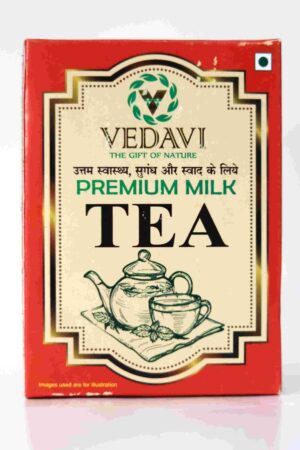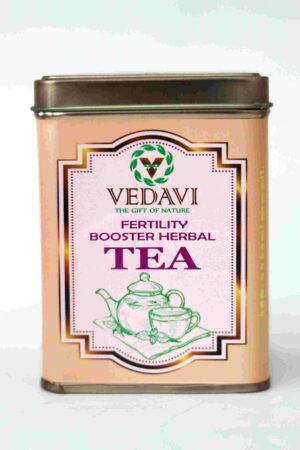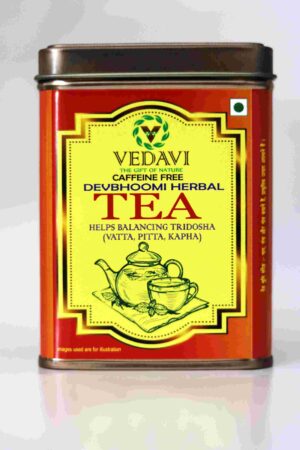'
DETOX HERBAL TEA |
||
|---|---|---|
| S.N. | INGREDIENTS | The benefits of each herb for detoxification along with references to books, studies, research, and journals |
| 1 | BASIL |
1. Basil (Ocimum basilicum) Benefits: Basil is known for its antioxidant properties, which help in detoxification by neutralizing free radicals. References: Verma, R. S., & Verma, S. K. (2011). "Antioxidant properties and applications of Ocimum basilicum." Journal of Essential Oil Research. Singh, E., Sharma, S., Pareek, A., Dwivedi, J., Yadav, S., & Sharma, S. (2012). "Pharmacological aspects of Ocimum sanctum Linn: A review." Journal of Pharmacy Research. |
| 2 | CINNAMON |
2. Cinnamon (Cinnamomum verum) Benefits: Cinnamon is known for its anti-inflammatory and antioxidant properties, aiding in detoxification. References: Gruenwald, J., Freder, J., & Armbruester, N. (2010). "Cinnamon and health." Critical Reviews in Food Science and Nutrition. Rao, P. V., & Gan, S. H. (2014). "Cinnamon: A multifaceted medicinal plant." Evidence-Based Complementary and Alternative Medicine. |
| 3 | CORIANDER |
3. Coriander (Coriandrum sativum) Benefits: Coriander helps in detoxification by promoting liver function and aiding in the elimination of heavy metals. References: Silva, M. D., & Oliveira, R. L. (2009). "Coriander (Coriandrum sativum L.) in traditional medicine." Journal of Ethnopharmacology. Rajeshwari, U., & Andallu, B. (2011). "Phytochemical constituents and therapeutic properties of Coriandrum sativum L." Food Science and Human Wellness. |
| 4 | FENUGREEK |
4. Fenugreek (Trigonella foenum-graecum) Benefits: Fenugreek aids in detoxification through its antioxidant properties and liver protection. References: Basch, E., Ulbricht, C., Kuo, G., Szapary, P., & Smith, M. (2003). "Therapeutic applications of fenugreek." Alternative Medicine Review. Srinivasan, K. (2006). "Fenugreek (Trigonella foenum-graecum): A review of health beneficial physiological effects." Food Reviews International. |
| 5 | GINGER |
5. Ginger (Zingiber officinale) Benefits: Ginger has anti-inflammatory and antioxidant properties that help in detoxification and digestive health. References: Butt, M. S., & Sultan, M. T. (2011). "Ginger and its health claims: Molecular aspects." Critical Reviews in Food Science and Nutrition. Mashhadi, N. S., Ghiasvand, R., Askari, G., Hariri, M., Darvishi, L., & Mofid, M. R. (2013). "Anti-oxidative and anti-inflammatory effects of ginger in health and physical activity." Journal of Nutritional Biochemistry. |
| 6 | GOTU KOLA |
6. Gotu Kola (Centella asiatica) Benefits: Gotu Kola supports detoxification by promoting liver and kidney health and enhancing the body's natural cleansing processes. References: Brinkhaus, B., Lindner, M., Schuppan, D., & Hahn, E. G. (2000). "Chemical, pharmacological and clinical profile of the East Asian medical plant Centella asiatica." Phytomedicine. Bylka, W., Znajdek-Awiżeń, P., Studzińska-Sroka, E., & Dańczak-Pazdrowska, A. (2013). "Centella asiatica in dermatology: An overview." Phytotherapy Research. |
| 7 | GUDUCHI |
7. Guduchi (Tinospora cordifolia) Benefits: Guduchi is known for its detoxifying properties, boosting the immune system and promoting liver health. References: Singh, N., & Chaudhary, A. (2011). "A review on the pharmacological aspects of Tinospora cordifolia." Journal of Pharmacognosy and Phytochemistry. Mathew, S., & Kuttan, G. (1997). "Immunomodulatory and antitumor activity of Tinospora cordifolia." Fitoterapia. |
| 8 | HIBISCUS |
8. Hibiscus (Hibiscus sabdariffa) Benefits: Hibiscus helps in detoxification by acting as a diuretic and promoting liver health. References: Ali, B. H., Wabel, N. A., & Blunden, G. (2005). "Phytochemical, pharmacological and toxicological aspects of Hibiscus sabdariffa L.: A review." Phytotherapy Research. McKay, D. L., & Blumberg, J. B. (2007). "A review of the bioactivity and potential health benefits of Hibiscus sabdariffa L." Phytotherapy Research. |
| 9 | MORINGA |
9. Moringa (Moringa oleifera) Benefits: Moringa is rich in antioxidants and helps in detoxification by supporting liver function. References: Anwar, F., Latif, S., Ashraf, M., & Gilani, A. H. (2007). "Moringa oleifera: A food plant with multiple medicinal uses." Phytotherapy Research. Fahey, J. W. (2005). "Moringa oleifera: A review of the medical evidence for its nutritional, therapeutic, and prophylactic properties. Part 1." Trees for Life Journal. |
| 10 | NETTLE |
10. Nettle (Urtica dioica) Benefits:Nettle helps in detoxification by promoting kidney function and supporting the elimination of waste products. References: Chrubasik, J. E., Roufogalis, B. D., Wagner, H., & Chrubasik, S. (2007). "A comprehensive review on the stinging nettle effect and efficacy profiles." Phytomedicine. Upton, R. (2013). "Stinging nettles leaf (Urtica dioica L.): Extraordinary vegetable medicine." Journal of Herbal Medicine. |
| 11 | PEPPERMINT |
11. Peppermint (Mentha piperita) Benefits:Peppermint supports detoxification by aiding digestion and promoting liver function. References: McKay, D. L., & Blumberg, J. B. (2006). "A review of the bioactivity and potential health benefits of peppermint tea (Mentha piperita L.)." Phytotherapy Research. Shah, S. R., & Mello, P. M. (2004). "A comprehensive review on peppermint (Mentha piperita)." Journal of Ethnopharmacology. |
| 12 | RHODODENDRON |
12. Rhododendron (Rhododendron arboreum) Benefits: Rhododendron has detoxifying properties and is used in traditional medicine to support liver health. References: Ranjan, V., & Brijesh, S. (2010). "Rhododendron arboreum: A review of its traditional uses, phytochemistry and pharmacology." Journal of Medicinal Plants Research. Sharma, B., & Kumar, P. (2013). "Rhododendron arboreum: An overview of the plant." Journal of Pharmacognosy and Phytochemistry. |
| 13 | TEA LEAVES |
13. Tea Leaf (Camellia sinensis) Benefits: Tea leaves are rich in antioxidants and help in detoxification by promoting liver function and neutralizing free radicals. References: Cabrera, C., Artacho, R., & Giménez, R. (2006). "Beneficial effects of green tea—a review." Journal of the American College of Nutrition. Khan, N., & Mukhtar, H. (2007). "Tea polyphenols for health promotion." Life Sciences. |
| 14 | TRIPHALA |
14. Triphala Benefits: Triphala is a traditional Ayurvedic formulation known for its detoxifying properties, promoting digestive health, and supporting the liver. References: Peterson, C. T., Denniston, K., & Chopra, D. (2017). "Therapeutic uses of Triphala in Ayurvedic medicine." Journal of Alternative and Complementary Medicine. Baliga, M. S., Meera, S., Mathai, B., Rai, M. P., Pawar, V., & Palatty, P. L. (2012). "Scientific validation of the ethnomedicinal properties of the Ayurvedic drug Triphala: A review." Chinese Journal of Integrative Medicine. |
| 15 | TURMERIC |
15. Turmeric (Curcuma longa) Benefits: Turmeric supports detoxification by promoting liver function, reducing inflammation, and providing strong antioxidant properties. References: 1. Aggarwal, B. B., & Sung, B. (2009). "Pharmacological basis for the role of curcumin in chronic diseases: An age-old spice with modern targets." Trends in Pharmacological Sciences. 2. Gupta, S. C., Patchva, S., & Aggarwal, B. B. (2013). "Therapeutic roles of curcumin: Lessons learned from clinical trials." AAPS Journal. |
Our Products
-
10% OFF
Sale!

Premium Milk Tea
₹250.00₹225.00 -
1% OFF
Sale!

Devbhoomi Herbal Milk Tea
₹350.00₹345.00 -
10% OFF
Sale!

Refreshment Herbal Tea
₹650.00₹585.00 -
10% OFF
Sale!

Detox Herbal Tea
₹650.00₹585.00 -
2% OFF
Sale!

Slim-Fit Herbal Tea
₹650.00₹635.00 -
10% OFF
Sale!

Anti Aging Herbal Tea
₹650.00₹585.00 -
2% OFF
Sale!

Diabetic Control Herbal Tea
₹650.00₹635.00 -
2% OFF
Sale!

Improve Digestion Herbal Tea
₹650.00₹635.00 -
10% OFF
Sale!

Fertility Booster Herbal Tea
₹650.00₹585.00 -
10% OFF
Sale!

Hair Health Care Herbal Tea
₹650.00₹585.00 -
10% OFF
Sale!

Skin Care Herbal Tea
₹650.00₹585.00 -
2% OFF
Sale!

Heart Care Herbal Tea
₹650.00₹635.00 -
2% OFF
Sale!

Devbhoomi Herbal Tea
₹650.00₹635.00 -
2% OFF
Sale!

Devbhoomi Herbal Tea (Caffeine Free)
₹650.00₹635.00
